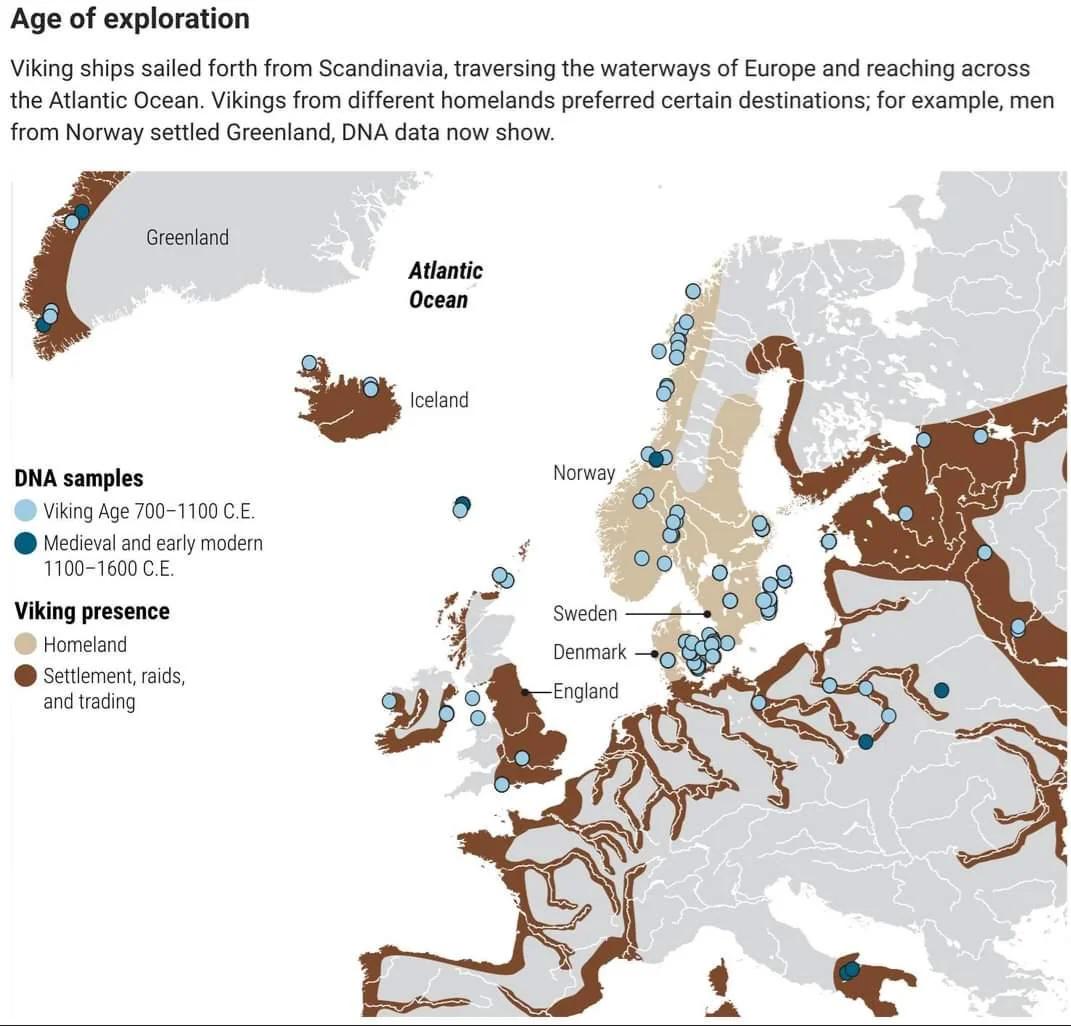Viking DNA Distribution Map in Europe


Marcus Rodriguez
Historical Geography Expert
Marcus Rodriguez specializes in historical cartography and geographic data analysis. With a background in both history and geography, he brings unique...
Geographic Analysis
What This Map Shows
This map provides a detailed visualization of the distribution of Viking DNA across Europe, showcasing the genetic impact of Viking migrations and settlements. It highlights the regions where Viking ancestry is most prevalent, revealing a fascinating tapestry of historical movements and cultural intermingling. The Viking Age, spanning roughly from the late 8th to the early 11th century, significantly influenced the genetic landscape of Europe, and this map illustrates those lasting effects.
Deep Dive into Viking DNA
Viking DNA primarily traces back to the Norse seafarers who hailed from Scandinavia, particularly modern-day Norway, Sweden, and Denmark. These explorers, traders, and warriors ventured far beyond their homelands, reaching the shores of North America, the British Isles, and even parts of the Mediterranean and Eastern Europe. One might wonder how such extensive travels could leave a genetic legacy; the answer lies in their interactions with local populations.
Interestingly, genetic studies have shown that Viking ancestry is not limited to Scandinavian countries. For instance, a significant percentage of the population in the British Isles—particularly in areas like Scotland and Ireland—carries genetic markers associated with Viking lineage. This is attributed to the Norse invasions and settlements during the Viking Age, which led to intermarriage and cultural assimilation.
Moreover, research indicates that Viking DNA has also influenced regions such as Iceland, where the Norse settlers intermingled with the native Celtic populations. A study published in 2015 highlighted that approximately 10-30% of Icelandic ancestry could be traced back to the Celtic peoples who were present before the Vikings arrived, illustrating a complex genetic interplay.
The map demonstrates these patterns, revealing hot spots of Viking ancestry that correlate with historical sites of Viking settlements. For example, areas like the Orkney and Shetland Islands, along with parts of Northern England and the Isle of Man, exhibit strong connections to Viking heritage. Genetic research has found that these regions often show higher frequencies of certain Y-chromosome haplogroups, such as R1a and R1b, which are commonly associated with Viking ancestry.
Beyond the British Isles, the influence of Vikings extended to the Baltic states and parts of Eastern Europe. Genetic markers found in countries like Estonia and Finland suggest a blend of local and Viking ancestry, likely due to trade routes and the establishment of settlements along waterways. This genetic intermingling paints a picture of a dynamic region where cultures and peoples converged.
Regional Analysis
When examining the Viking DNA distribution map, it becomes clear that certain regions stand out due to their historical significance and genetic diversity. In Scandinavia, the highest concentrations of Viking ancestry remain, particularly in Norway and Sweden, where many Norse settlements were established. Interestingly, the coastal areas show a stronger genetic footprint compared to the inland regions, indicating a greater reliance on maritime trade and exploration.
In the British Isles, the genetic impact of the Vikings varies significantly by region. For instance, in Scotland, particularly the Hebrides and Orkney Islands, genetic studies reveal a robust Viking heritage, with many individuals carrying haplogroups linked to Norse ancestry. In contrast, places like Southern England exhibit lower levels of Viking DNA, suggesting a more complex historical narrative with multiple influences over the centuries.
The influence extends further into Ireland, where studies indicate that about 10% of the modern Irish population could be descended from Viking settlers, particularly in Dublin, which was a significant Viking settlement. This genetic connection is fascinating because it highlights how Viking culture has woven itself into the fabric of Irish identity.
Significance and Impact
Understanding the distribution of Viking DNA across Europe is crucial for several reasons. Firstly, it sheds light on the historical movements of populations and the interconnectedness of cultures during the Viking Age. This period was marked by significant trade, exploration, and cultural exchanges that shaped the development of modern European societies.
Moreover, current trends in genetic research continue to unravel the complexities of our ancestry. As more individuals participate in genetic testing, the awareness of Viking heritage is likely to increase, prompting a greater interest in the history and culture of the Vikings. This can lead to a renaissance of Viking studies, where people seek to understand their ancestral roots and the broader implications of their heritage.
In addition, this genetic mapping has implications for contemporary discussions around identity and belonging in Europe. As nations grapple with questions of immigration and cultural integration, the Viking legacy serves as a historical reminder that migration and intermingling have long been part of the European narrative. It challenges us to consider the fluidity of identity and the shared histories that bind us.
Ultimately, the Viking DNA distribution map is not just a scientific resource; it is a window into the past that informs our present and shapes our future. By appreciating the genetic tapestry woven by the Vikings, we can gain a deeper understanding of the diverse cultural landscape of Europe today.
Visualization Details
- Published
- October 19, 2025
- Views
- 32
Comments
Loading comments...